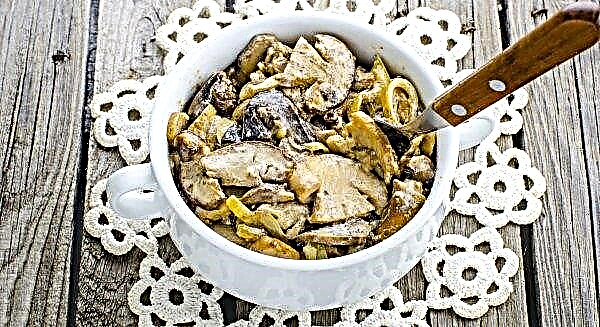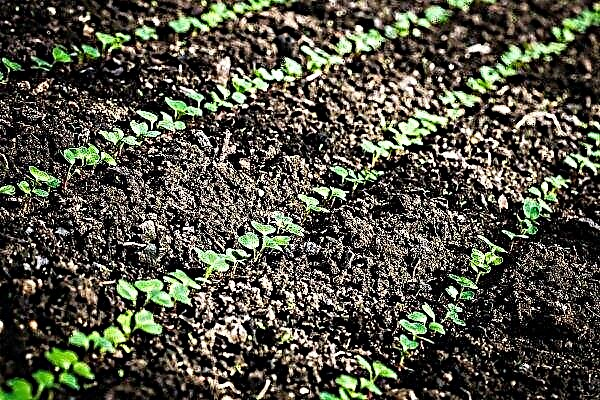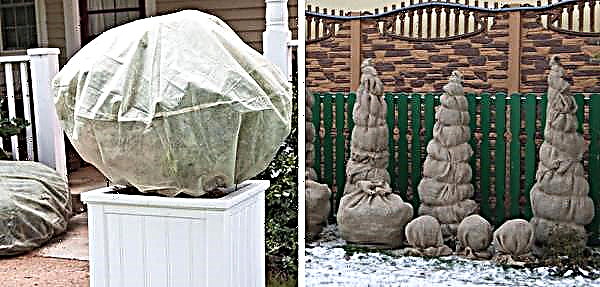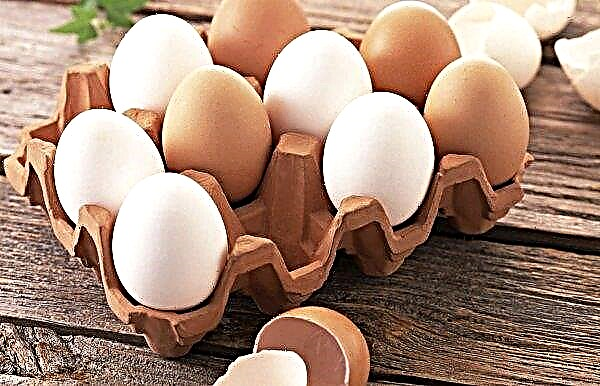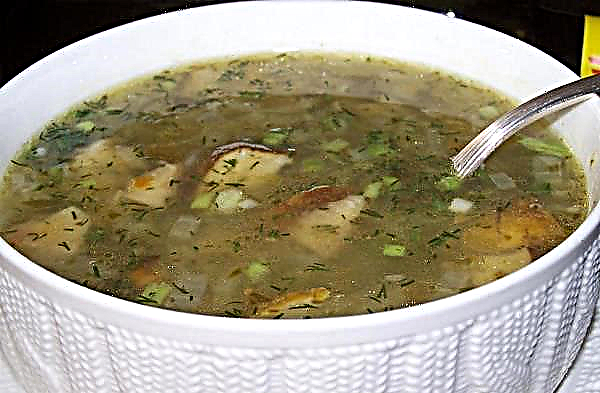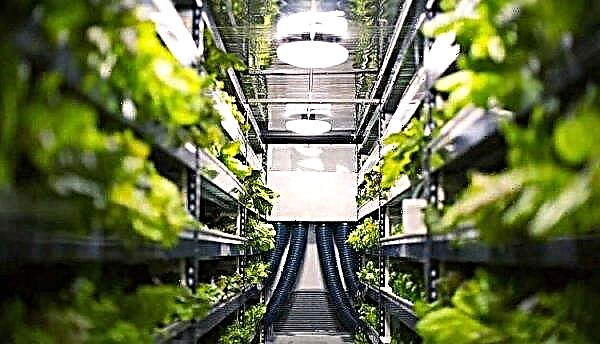Most indoor flowers are very photophilous and require special attention. But there is a plant that easily grows in poorly lit rooms and is suitable even for very busy people. This is an aspidistra, a beautiful Asian plant, which, due to its unpretentiousness, has occupied a special place in the hearts of many color lovers. The features of this species and methods of growing it are described below.
Aspidistra high: houseplant features
Aspidistra - this is the name of the genus of herbaceous perennials from the Asparagus family. They have no stem, and leaves grow straight from the root. The Latin name, which translates as "snake index", the plant received because of its serpentine root. And maybe because in nature you can learn from the swaying leaves about a snake crawling on the ground. People call the aspidistra a “friendly family” for leaves growing in a bunch.
This flower comes from the mountain subtropical forests of China and Japan. The genus consists of 98 species, but at home only 1 species is grown - a high aspidistra. Through the efforts of breeders, several dozens of decorative varieties of this species, differing in size, shape and special pattern of leaves, were bred.
But no matter what variety the plants belong to, they can be recognized by common species characteristics:
- lack of stem;
- large leathery leaves grow from the root on long petioles, the length of which can reach 35 cm;
- leaves: shape - oval or lanceolate, length - up to 50 cm, width - 5-15 cm, color - green in different shades, can have a variety of patterns of white, cream and yellow;
- the root system is branched, very developed, has a main root (thick and fleshy), which is partially located on the surface, there are thin processes;
- the flowers are small, inconspicuous, fleshy, brown, sit directly on the ground, rarely bloom at room conditions;
- after artificial pollination, fleshy pear-shaped fruits with one seed inside can form.
Did you know? Aspidistra refers to centenarians. She can live up to 100 years, not even in the most favorable conditions..
Planting and placing plants in the room
Aspidistra is unique in its unpretentiousness, it grows beautifully almost anywhere in the room. Nevertheless, there are preferred conditions (lighting, temperature, humidity) in which the plant develops best and can even bloom.

What kind of lighting do you need
The main advantage of a "friendly family" is its shade tolerance. A bush with plain green leaves feels great on the northern windowsill, away from the window, and can generally do without natural light.
However, varieties with variegated leaves need more light - with a lack of lighting, light patterns turn green and the leaves lose their beauty, so it is better to keep the pot on the eastern or western windowsill. If the room is southern, then the flower pot should be removed deep into the room, away from the window.
Important! An important condition is to protect the flower from direct sunlight, otherwise the leaves will get burned. Therefore, the southern window sill is contraindicated.
In summer, a shady place in the fresh air is welcome, for example, on a balcony or in the yard. And in winter it is advisable to provide good artificial lighting.
Requirements for temperature and humidity
Aspidistra loves moderation in everything, but calmly tolerates both high and low temperatures.
It is desirable that the temperature regime changes in accordance with the season:
- in summer it is comfortable at + 22 ... + 25 ° С, can withstand up to + 28 ° С, at higher temperatures the ends of the leaves dry out;
- in winter, the optimum temperature is + 10 ° C, minimum + 5 ° C, maximum + 15 ° C.
The air in the room should be of average humidity. Dry air is easily tolerated only if the room is cool.
In other cases, welcome:
- regular spraying with purified water (every 2 weeks);
- wiping the leaves with a damp cloth;
- warm shower from time to time (trying not to waterlog the earth in a pot).
Spraying is necessary if:
- it's very hot in summer;
- in winter the room is heated.
What should be the substrate for the plant
The soil should be fertile, light and non-acidic.
Mixture Options:- buy a substrate for palm trees or ficus, add compost and vermiculite to it (1/5 of each);
- leaf (garden) land mixed with peat;
- a mixture of leaf (1 part) and turf land (2 parts), humus, peat and sand (1 part each).
How to care for an aspidistra
Having created suitable conditions for the flower, you need to think about the care that it needs. The plant must be regularly and properly watered and fertilized. Also, it should be transplanted from time to time.

Features of watering
The frequency and abundance of irrigation also depends on the season: in the summer it is plentiful and often (2-3 times a week), in winter - much less often. A signal that it is time to water is the drying of the top layer of the earth.
Irrigation water should be soft, free of chlorine impurities; To do this, tap water must be defended. Melt water is perfect. It should be at room temperature (+ 23 ... + 25 ° C).
Important! Regular drying and waterlogging of an earthen coma is unacceptable. This can lead to plant diseases.
Plant nutrition
Its health and appearance, for example, the juicy color of the leaves, depend on the nutrition of the plant. Aspidistra fertilizes only from the beginning of spring to the beginning of autumn, when leaves are actively growing. Frequency of top dressing: monophonic varieties - not more than 2 times a month, variegated - 1 time per month or less. Preference is given to liquid mineral fertilizers intended for decorative and deciduous indoor plants.
It is impossible to overfeed the aspidistra, because this will provoke cracking of the leaves.
Pruning
From time to time, the appearance of the plant is spoiled by bad leaves: dry, sluggish, damaged. As they appear, they should be cut with a sharp knife at the rhizome itself.
This must be done for several reasons:
- to improve the aesthetics of the flower;
- to protect plant health, i.e. diseased leaves can be a source of infection;
- to stimulate the growth of young foliage.
Transfer
After winter dormancy, usually in March or April, it is time for the flower to be transplanted into a new pot. The rhizome of the aspidistra is difficult to tolerate stress, so you should not transplant it more often than after 3-4 years. But it is necessary to do this, because along with the leaves, the root system also grows - it quickly braids the entire earthen lump. In this regard, the pot for transplanting should be much larger (2 times) than the previous one. The soil is taken the same in which the flower is already growing.
Transplant Process:
- At the bottom of the pot pour a layer of drainage (expanded clay).
- A small layer of earth is poured on top.
- The flower is removed from the old container with an earthen lump and carefully transferred to a new one.
- On the sides add the missing amount of soil and tamp a little.
- Watered with warm, settled water.
Breeding methods
Reproduction of aspidistra at home is a simple matter. There are 3 ways to propagate it: dividing a bush, rooting a leaf and sowing seeds.
Dividing the bush
This is the easiest option, performed in conjunction with the spring transplant.
How it goes:Did you know? In Japanese restaurants, cooks use aspidistra leaves to serve different dishes, for example, to separate one type of sushi from another.
- The bush is removed from the pot and the roots are slightly freed from the ground.
- With a sharp knife or secateurs, a segment of rhizome with 5-6 leaves is separated.
- Sliced roots are treated with wood ash for disinfection.
- A new bush is planted as usual in a small pot, covered with a transparent jar and placed in a warm place, where the temperature is not lower than + 18 ° С.
- Watered sparingly, otherwise the root will rot.
- When a new leaf appears, the jar needs to be removed.
Seeds
Propagation by seeds is painstaking work, i.e. a healthy beautiful plant will grow only many years after sowing the seed. Therefore, it is rarely practiced at home. More often breeders do this in order to develop a new variety.
The first difficulty is getting seed. To do this, you need to manually pollinate two neighboring flowers that bloom for only 1 day. Then, in place of the flower, 1 fruit appears, within which only 1 seed ripens.
Seeds are sown in spring when it is already warm. The sowing process is as follows:
The sowing process is as follows:
- The tank is filled with loose soft soil and moisturized.
- Seeds (1 or more) do not deepen very deeply.
- The container is covered with glass and placed in a warm dark place.
- With the advent of seedlings, the lid is removed, and the container is placed on a light windowsill.
- When the sprouts get stronger, they are planted in separate pots.
- Each seedling is covered with a glass jar.
Rooting of leaf plates
A special method of leaf propagation is also practiced. The technique is unusual, but effective.
Execution Technology:
- A healthy strong leaf is cut with a sharp knife from the petiole at the site of thickening just above the base.
- Allow the slice to dry.
- A little water is poured into a glass jar or a bottle with a wide neck and a leaf is placed into it, cut into the water.
- The dishes are sealed with a lid so that air does not enter.
- The jar is placed in a warm and bright place.
- When white roots appear (after 2 weeks), the leaf is taken out of the can and planted in loose nutrient soil.
- The planted leaf is covered with a glass cap until new shoots appear.

Diseases and pests
Aspidistra has good immunity against viral diseases. But sometimes the unhealthy appearance of the leaves testifies to the painful state: they turn yellow, stain, dry out, crack. All this is the result of errors in care: non-compliance with the irrigation and top dressing regime, improper lighting, poor quality of irrigation water, etc. In order to improve the bush, it is necessary to remove diseased leaves and establish proper agricultural practices.
Of pests, aspidistra is especially fond of scabbard and spider mite. With a small number of insects, washing the leaves with a soapy solution will help. Before this, the shield should be assembled with your hands. More effective is spraying with special insecticides, for example, Actellic.
Aspidistra tall is an unpretentious, but beautiful plant. It is enough to adhere to simple rules of care, and this flower will decorate any room for many years.

